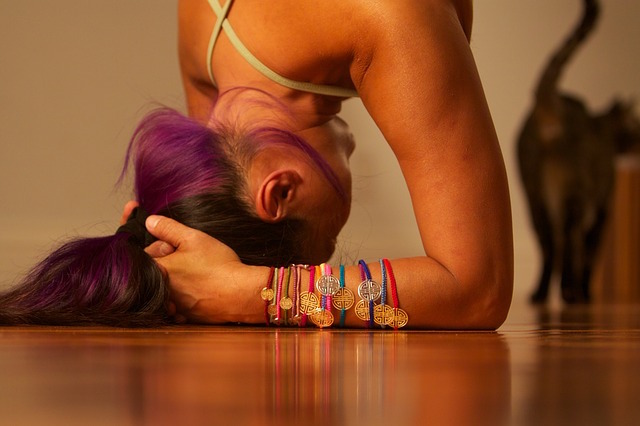
How Sirsasana Helped Me Cope With My Deepest Fears.
Since the beginning of my yoga practice three years ago, I had always dreaded the end of every single class.
The teacher would say, “Now, try a headstand,” and the feeling of lightness in my body would instantly disappear, replaced by a sense of impending embarrassment.
A headstand (or Sirsasana) seemed to be a piece of cake for everyone except me. Even pure beginners seemed to be able to put their world upside down with ease.
For me, it seemed like an impossible task. I took extra assistance from teachers, caused delays in the class, fell down, screamed, took the help of a wall—but with each move, I became more and more convinced that it was never going to happen for me.
The constant feeling of embarrassment only deepened that belief, and one day, I remembered a good reason for me not to ever attempt a headstand again. When I was a kid, one doctor said that my neck wasn’t quite straight—and for me, it explained everything. I convinced myself that a headstand was not just something I wasn’t able to do, but something that could be life threatening for me.
I kept practicing yoga without incorporating Sirsasana, until I came upon a big change in my life. I was on the verge of moving and starting my own company, and I was strangled by fear and doubt. I felt that in order to move beyond these feelings, I had to manage to do something that I was deeply afraid of, something that I’d struggled with and never completed.
It was then that I decided that I had to learn how to do a headstand.
From the time I made this decision, it took me one year of daily morning practice to be able to do a headstand. What I learned along the way actually had little to do with physical ability. This practice made me face my fears and weaknesses every single morning, and ultimately taught me how to move through them.
Here are some of the hidden lessons I found when learning how to do a headstand:
1. Fear is one of the biggest blockages we face in life. Fear can stop us from doing anything, without us even realizing that it is present, as it often hides in the deepest layers of our subconscious. We can be afraid of getting hurt, of failing, of being judged, of not being accepted, of being left alone—the list is infinite.
2. We often cling to our fears and delusions with great pleasure and eagerness. It is much easier to find an excuse—an unlucky environment or unfortunate circumstances—than to take ownership of a situation. We convince ourselves of what feels comfortable. On the other hand, pushing ourselves toward something that seems undoable takes effort and dedication.
3. We have to build the core foundation—for everything in life. Many yoga-related injuries are avoidable by simply not rushing into a pose before we are ready for it. When I tried to jump into a headstand directly, it hurt everything—my shoulders, my spine, my neck—because I simply wasn’t strong enough. Only when I spent a considerable amount of time strengthening the right muscles was I able to do a headstand safely and with ease.
In whatever you are working on in life, make sure you have a strong foundation.
4. Some things will come easier to us than to others, some will come harder—and that is okay. I often saw how easily a headstand came to beginners, yet I couldn’t do it even after months of practice. It made me feel constantly unable and demotivated. But I had forgotten that complicated twists and backbends never really required much effort from me, even as other students struggled with them.
We all have different strong and weak sides, and it doesn’t mean that we are any better or worse. We just are.
5. Daily practice goes a long way. Keep trying. We might not notice any progress for a long time, but trust me, we’re moving forward. Big changes do not happen at once or overnight.
I expected that a headstand would either twist my neck or straighten my spine. The last thing I expected was that I would face my fears, and I would keep facing them for weeks and even months to come.
Every single morning, I started my yoga practice with an attempt to do a headstand. At the beginning it was a source of total distress and despair. But one year of consistent practice later, it became a daily reminder of what we can achieve—if we only let go our fears and replace them with dedication and faith in ourselves.
~
~
Author: Anastasia Sharova

No comments:
Post a Comment